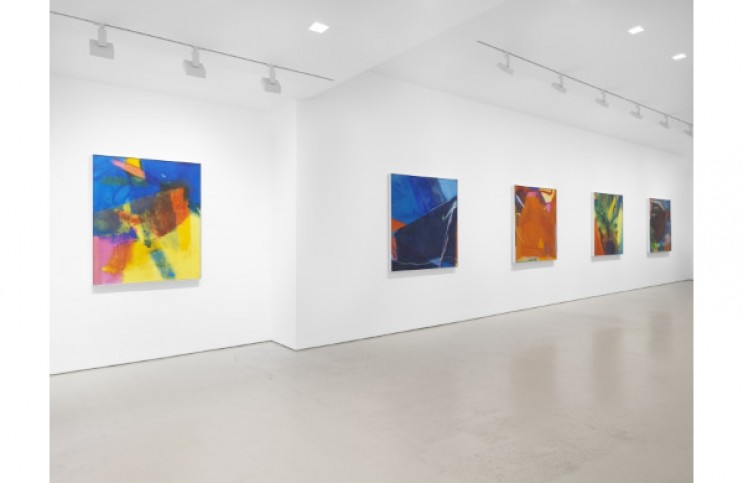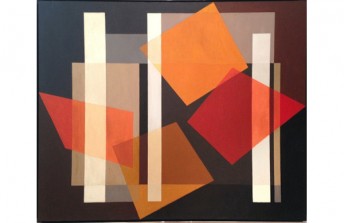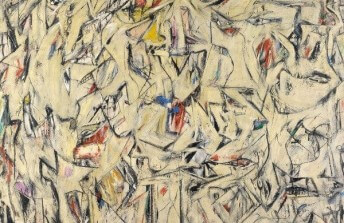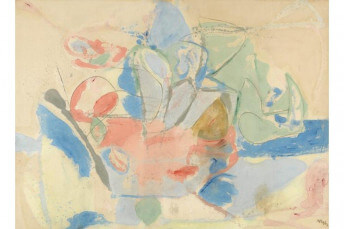Emily Mason, Between Abstract Expressionism and Color Field Painting
Jan 20, 2021
A pair of exhibitions this winter are drawing fresh attention to the work of Emily Mason, an American colorist painter who died in 2019 at age 87. “She Sweeps with Many-Colored Brooms”: Paintings and Prints by Emily Mason, at the Bruce Museum in Greenwich, Connecticut, juxtaposes a body of paintings made between 1958 and 1968 with a selection of prints made between 1985 and 1996. Concurrently, EMILY MASON: CHELSEA PAINTINGS at Miles McEnery Gallery in New York showcases 20 paintings made between 1978 and the 1990s, after Mason moved into a studio in a refurbished loft in the Chelsea neighborhood of Manhattan. Looking at an Emily Mason painting is like listening to a great jazz recording: if you let yourself get lost in the work, sensations will wash over you. You might like one part, cringe at another part; then emotions well up and you find yourself thinking of something else. Come back to it the next day and it still has the same structure, but you notice something small that surprises you, and you wonder—how did I not see that before? That was just one of the many talents Mason nourished in herself: the ability to make viewers feel they are on a journey of discovery. She wanted viewers to feel how she felt when she was making the work. She said, “I just want to create an experience, because I think when you look at a painting you recreate the painting experience itself.” For Mason, the painting experience was contemplative, intuitive, relaxed and free; one moment inspired the next, as she allowed her materials to lead the way. She hoped as viewers we would give in to the materials as well, letting the paint lead our eyes across the surface, and the translucent hues pull our mind through the layers.
Progressive Color
Born in 1932, Emily Mason was the third in her family to make a name for herself as an artist. Her mother was abstract artist Alice Mason, a founding member of the American Abstract Artists, who was herself descended from the 19th century American painter John Trumbell. Mason was literally raised in the presence of the first generation Abstract Expressionists, many of whom were close friends with her mom—she was even babysat by Willem and Elaine de Kooning. She sympathized early with the freedom to experiment that those artists cherished. While studying in Venice in 1956 on a Fulbright Scholarship, she abandoned the rigid Accademia di Belle Arti where she was enrolled and set out to learn on her own. Two life-changing events quickly followed. The first was that she married the painter Wolf Kahn, whom she had met previously in New York, and who also happened to be in Italy at the time. (Abstract painter Cecily Kahn is their daughter.) The second was that she learned about analogous color theory.
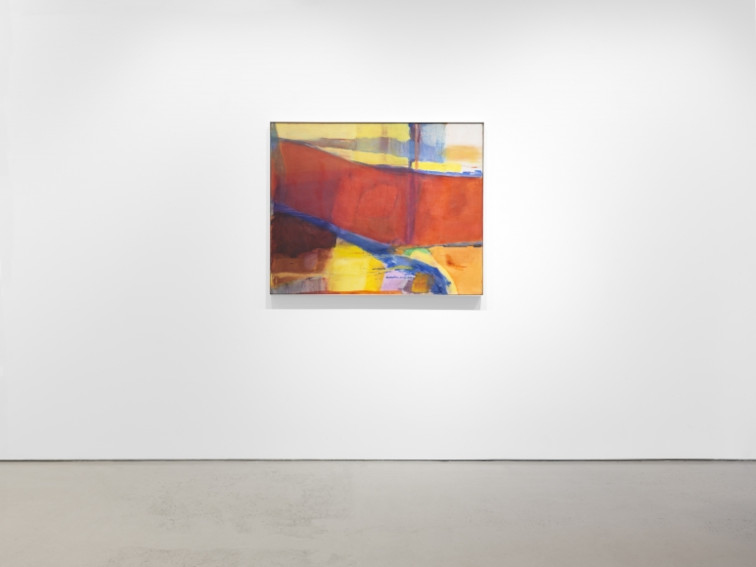
Miles McEnery Gallery, New York, "Emily Mason: Chelsea Paintings," 7 January - 13 February 2021.
Analogous colors are the ones positioned next to each other on the color wheel—they’re the opposite of complementary colors. A painting made with complementary colors will pop as the chromatic opposites push off each other. A painting made with analogous colors will relax the eye. Analogous color mimics a lot of what we see in nature, like a swath of autumn leaves gradually shifting from yellow to orange to red. Mason used analogous colors to build her compositions progressively, allowing the logic of color relationships to guide her instincts. She employed all kinds of methods, adopting some from her Abstract Expressionist mentors, and others from color field artists. She always worked with oil paints, but switched her surfaces from paper to canvas. Crucially, she experimented with different solvents to create varying levels of translucency, a key source of many of the surprising moments of joy in her paintings.
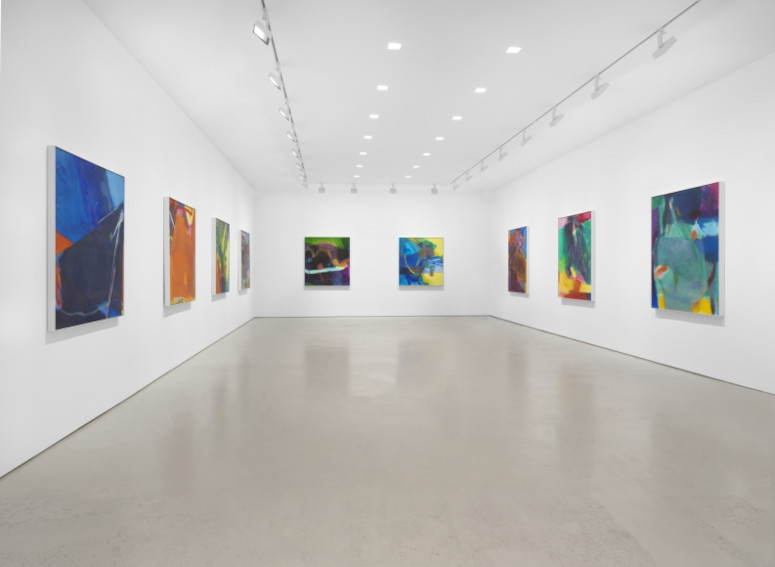
Miles McEnery Gallery, New York, "Emily Mason: Chelsea Paintings," 7 January - 13 February 2021.
Improvisational Freedom
The paintings on view this winter at Miles McEnery Gallery are all similar in scale and materiality, a fact that gives viewers a chance to really focus on what Mason was so brilliant at evoking: the sense that color can communicate emotion. At first reading, it seems that this is simply a series of works that can be taken in with a glance. As you stay with the paintings longer, it becomes apparent that each painting has a completely unique weight, and a singular tone; it is as if each one has its own personality. She intuitively interacted with these compositions until she got to the root of what the painting was trying to communicate. These elegant and personal variations on a central theme give weight to the idea that what notes are to a jazz musician, color was to Mason.
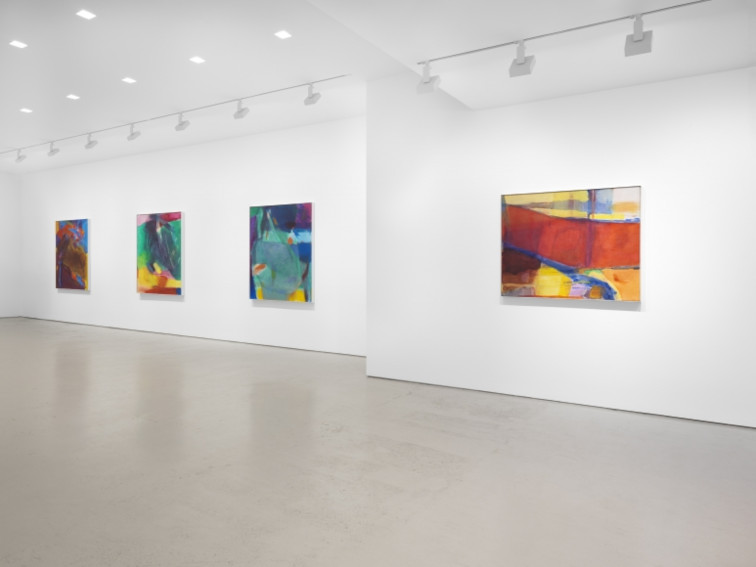
Miles McEnery Gallery, New York, "Emily Mason: Chelsea Paintings," 7 January - 13 February 2021.
The works on view at the Bruce Museum are equally demonstrative of Mason as colorist, but differing as they do both in scale and in process, they also add layers of depth to what else Mason achieved as an artist. Her oil on paper works read at first glance like delicate watercolors. The range of opacity and translucency that mason achieved with these mediums is impressive. Their scale also allows the eye to take the entire composition in, revealing that Mason had a sympathy with landscape painting that is not so evident with her larger works. Her prints, meanwhile, create an almost anthropomorphic effect, as the fields of color pronounce themselves in defined ways, as forms with depth, much different than the amorphous clouds of color we see in the oil paintings. Seeing the fruits of so many decades of her practice exhibited at the same time reminds us that Mason was one of the rare artists who find their voice early and remain committed to it their whole life, regardless of the changing trends. She defined her voice as something layered, emotive, and unique, and left a body of work that lets viewers see beyond themselves into a world of creative intuition.
Featured image: Miles McEnery Gallery, New York, "Emily Mason: Chelsea Paintings," 7 January - 13 February 2021.
All images used for illustrative purposes only
By Phillip Barcio
